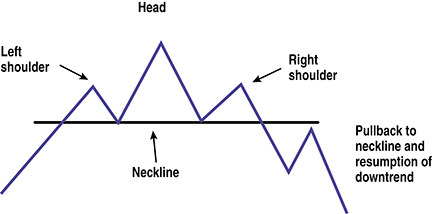CHART PATTERNS
About The Trading Classic
Head & Shoulders Failure
How can you effectively trade one of the most recognizable chart patterns?
Imagine this scenario: You are reviewing the charts of stocks that recently declined when a pattern jumps out at you from the screen — a head & shoulders formation. You place a stop market order to sell the stock short once the neckline is pierced. The order is ultimately filled and you wait for the stock to head south. At first, it declines slightly and then begins to move sideways for a week before heading up and back through the neckline. Luckily, you placed a stop order to cover your position a few percentage points above your initial entry. You vow never to trade that stock again.
A few months later, out of curiosity, you pull up the stock’s chart. You are shocked to see that it has lost over 40% of its value, the way you thought it would, since you placed your sell short order. You think to yourself, “What did I do wrong?”
You can be right and still lose money, an old saying goes. Every indicator might be screaming that a stock is setting up for a terrible decline, but if you do not time the trade correctly, you can easily be whipsawed out, only to watch the stock continue to decline. Timing is especially important when selling short. Equities seldom, if ever, decline in an orderly and uniform fashion. Price movements can be fierce, violent, and scary for traders.
The head & shoulders pattern is one of the most recognized of all chart patterns. It does not take a seasoned trading eye to spot one forming on a chart. Moreover, trading books, publications, and websites routinely tout the reliability and ease of trading the head & shoulders pattern. Anyone who has sold short can tell you that picking a spot on the chart right below a pattern confirmation and filling an order does not guarantee a successful trade. While having the correct chart pattern is indeed significant, looking at other factors can assist you in whittling down your pool of short candidates to those with the highest likelihood of a significant decline.

Figure 1: a head & shoulders pattern
A refresher on the H&S
In case you are unfamiliar with the head & shoulders pattern, let me provide a brief introduction. Essentially, as a stock rises in value and hits new highs, the buyers are exhausted. This forms the top of the left shoulder (LS). A correction ensues whereby the stock declines to a support area and consolidates. Another push is made by the bulls. This time, the price moves above the previous high (the aforementioned LS). Again, there is less demand to buy at this point and the stock declines to approximately the area where the previous consolidation occurred after the decline from the top of the left shoulder. This forms the head (H).